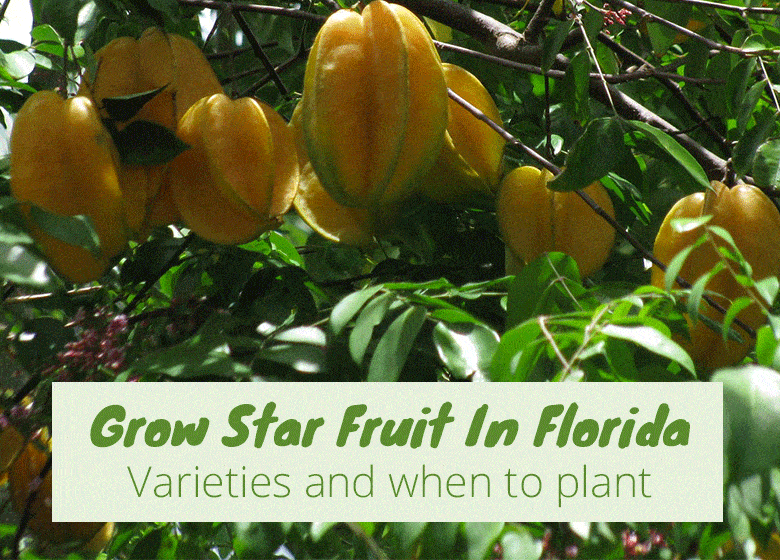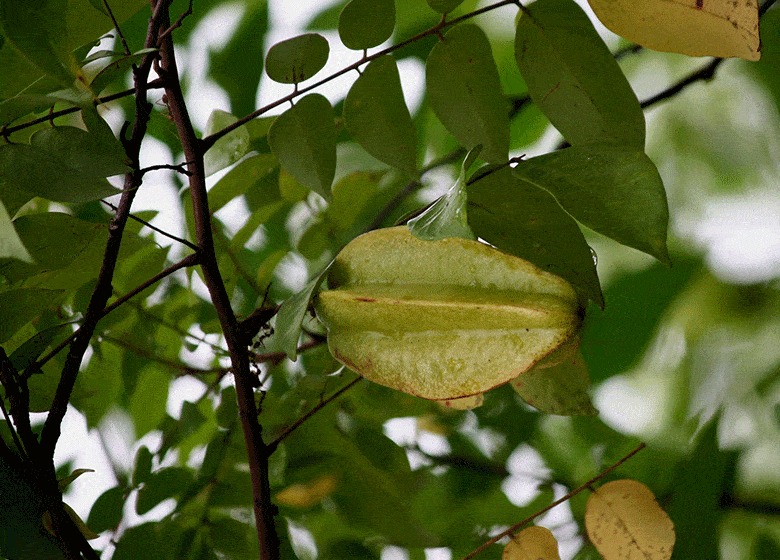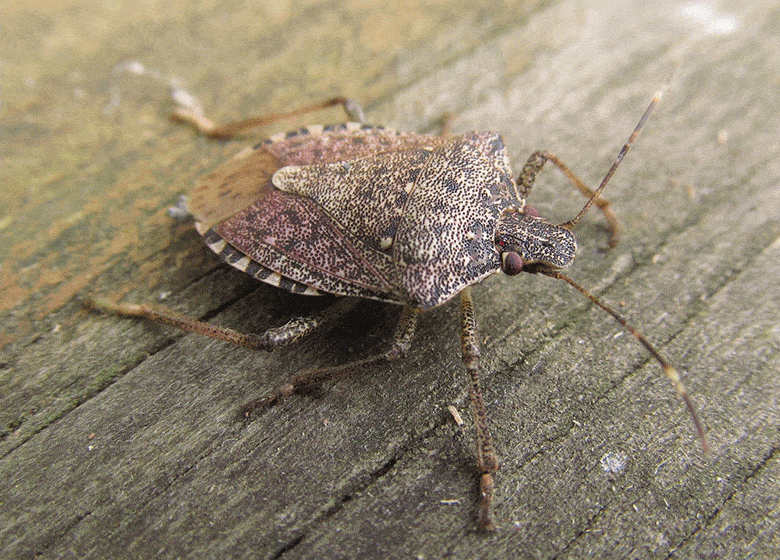
Is it easy to grow star fruit in Florida?
Star fruit, also called carambola, has been cultivated in Florida for more than 100 years. You can grow the star fruit in South Florida as well as in warmer southwestern and southeastern counties. Star fruit cultivations thrive in areas like Merritt Island, Tampa Bay, Palm Beach, Collier Counties, Lee, and Miami-Dade. Carambola is indigenous to Southeast Asia, where it has been harvested since ancient times.
It is a tropical and subtropical plant, and it can thrive in elevations of up to 4,000 feet. The fruit likes full sun exposure and yearly rainfall of a minimum of 70 inches.
It has an oval shape and resembles a star in cross-section. The fruit’s flesh is light yellow to yellow, and it can be consumed out of hand. The fruit is quite juicy, while its texture has the same consistency as that of grapes. The fruits are also used in cooking, mostly in parts of Asia. In Thailand, for example, carambola fruits are cooked together with shrimp.
Best Time to Plant Star Fruit in Florida
It’s best to plant star fruit in Florida during the early spring.. Whether you are planting from seed or you have a baby tree, this time of year will give ideal conditions.
However, Its seeds will germinate throughout the year, although the process only takes a week during spring and summer. They will germinate after two to three weeks in the course of winter. You can start the germination indoors to control the conditions.
Varieties of Carambola
Carambola is commonly categorized in the tart or sweet varieties. The tart varieties are richly-flavored, and they have more concentrations of oxalic acid. The sweet types have less oxalic acid and are mildly-flavored. The sweet varieties are from Malaysia, while the tart types are associated with Brazil.
You can get numerous cultivars in Florida, including:
- Golden Star– This cultivar was propagated from seeds from Hawaii at the University of Florida. It was officially released to growers in 1965. The resulting fruit was large and deep-winged, and it has a mild-subacid taste.
- Arkin– This cultivar produces sweet yellow fruits with few seeds. The tree is partially self-fertile, and it bears from December to March.
- Hoku– The fruit has a sweet and rich flavor, and it can be cut into beautiful star shapes.
- Maha– This is a Hawaiian variety that produces roundish fruits. The flesh is crunchy with low-acid content.
- Wheeler– This cultivar has orange skin and flesh, and its fruits have a mildly sweet flavor.
Growing Star Fruit

Select an area with full sun in your garden to plant the tree. Ensure each tree has 25 to 30 feet of space around it.
The planting hole should be twice the root ball’s width but shallower than it. Separate the roots of the tree and carefully place it in the hole. The tree should stand vertically, and you should add water to get rid of any air pockets. You do not have to apply compost or fertilizer in the hole.
The planting spot should also be away from structures like buildings and trees. Additionally, the carambola trees need protection from the wind.
The trees will do best in well-drained and loamy soils that are rich in organic matter.
Growing Carambola From Seed
Carambola can be grown from fresh seeds obtained from ripe fruits. Trees planted like this will take longer than grafted varieties, and the quality is typically inconsistent.
If you want to grow carambola from seeds, look for healthy ones with a dark brown and glossy coat. The seeds lose viability very fast, which is why they need to be planted immediately after extraction. The storage life of the seeds can be extended via partial drying or refrigeration.
The seeds can be easily removed from carambola fruits. Wrap them with cheesecloth and lightly rinse them using cool and distilled water to wash the aril and any residue.
Only one seed should be planted in a single pot. Fill the pots with two parts perlite or vermiculite and one part sterile potting soil. The growing medium should not be too compact as to hamper on drainage.
The seeds should be lightly covered with the growing medium, such that they are still visible from the surface. Place the pot in an area where temperatures are above 70ºF. The pot’s edges should not be sealed, and it should be away from direct sunlight.
A sheet of plastic should be wrapped loosely over the container to trap humidity. Lift the sheet daily to determine the moisture level. Spray water with a spray bottle instead of pouring water directly into the pot.
Carambola seeds take seven to twenty days, depending on the conditions and the season. Seeds started in the summer will typically yield faster. Ensure that the starting soil does not dry out, and you can use a warming mat to fasten the process.
You can transplant the seedlings once they show two or more sets of leaves. Remove the wraps after the seedlings sprout, and relocate the pot to a room with temperatures above 55ºF.
If you want to grow carambola in containers, transfer the seedlings to gallon pots filled with sand and loamy-based potting soil.
Growing Star Fruit Cuttings
The carambola propagation is similar to the process used with many woody tropical plants. If you have access to an existing tree, cut off branches with buds. Identify stems that are at an angle, and transfer them to a rooting hormone. The cuttings will thrive best in polythene packs with potting soil. Water the cuttings adequately, and they should establish roots after a few weeks.
Or you can try building a DIY Cloner or buying the Oxyclone. You can check out my article about my experience with building a cloner and if I thought it was worth it or not here.
Watering Star Fruit
The star fruit tree needs water for the best performance. Regular watering is especially important over the summer months, or when the tree is young.
The carambola has limited drought resistance, which is why it should be irrigated from bloom through harvest. Water the tree during dry spells in winter. Do not overwater the tree to prevent foliage health problems and rot diseases.
Fertilizing Start Fruit
If the soil is not very fertile, use light applications on young trees every 60 to 90 days before they are well established. Use a ½ pound of mixed fertilizer, and a 6-6-6-3 formulation. Mature trees require fertilizing twice a year in deep soils and three times in shallow soils.
Micronutrients can be added in acid or neutral soils, either in dry applications or liquid form.
You can add mulch to star fruit trees to boost moisture retention in the soil. The mulching layer can be made of wood chips or bark, and it should be 2- to 6-inch.
Harvesting Star Fruit
The star fruit is typically harvested when the fruit exhibits a yellowish-green color. The tree is evergreen, meaning that harvest times can take place at any time in the year. In Florida, harvest typically occurs over an eight-month cycle starting from June to February. Trees will reach maturity at varying times over this period.
The fruits can be shaken down by a machine or harvested by hand. It is best to harvest them in the morning under cool temperatures. In optimum conditions, the trees can give between 100 and 300 pounds of fruits every year.
The fruits are typically packed in stored within 24 hours to prevent bruising. The temperatures should be maintained at 50ºF.
If you harvest your fruits when they are green, keep them at room temperature. Turning them constantly will ensure they ripen evenly. A golden yellow color will gradually replace the green color.
Ripe star fruits are incredibly perishable, and they will only keep for several days. Once they turn a light brown color, relocate them to the refrigerator to prevent overripening. They can be refrigerated for up to two weeks, or you cut them vertically and store them in the freezer.
Pests and Diseases
Several pests will attack the star fruits as it grows.
Pests like the squash bugs and stink bugs will cause fruit damage.

Look for puncture wounds on the fruits if you detect this infestation. If there are brownish trails on the surface of the fruits, treat for fruit blotch miner.
Other pests that target the tree include the diaprepes weevil, red-banded thrips, opossums, and raccoons. A pest-infected tree can be treated with a combination of predatory insects, insecticidal soaps, and horticultural treatments. Spray the carambola with fungicides early in the season as a prevention measure.
Anthracnose is a common disease with star fruits. It is caused by a fruit-rotting fungus, which targets ripe but injured fruits. Sooty mold can also appear on the fruit surface.
Carambola is also prone to root rot caused by a fungus. If your tree is affected by the tree-decline syndrome, you may observe leaf drop, reduced fruit size, and reduced tree vigor.
The star fruit can also be impacted by drought and dry soil conditions. Symptoms include browning of leaves, reduced fruit size, stem dieback, leaf folding and wilting, and leaf drop.
How To Grow Carambola In Florida
Star fruit thrives in many tropical and subtropical areas in the world. In the US, carambola plantations have been established in South Florida and Hawaii. The plant’s cultivars are divided into sweet and tart varieties. Some varieties like the Golden Star have been developed to thrive in the precise conditions of Florida. It is easier to grow carambola from cuttings than seeds, and the trees will need full sun, water, and sufficient fertilization.

